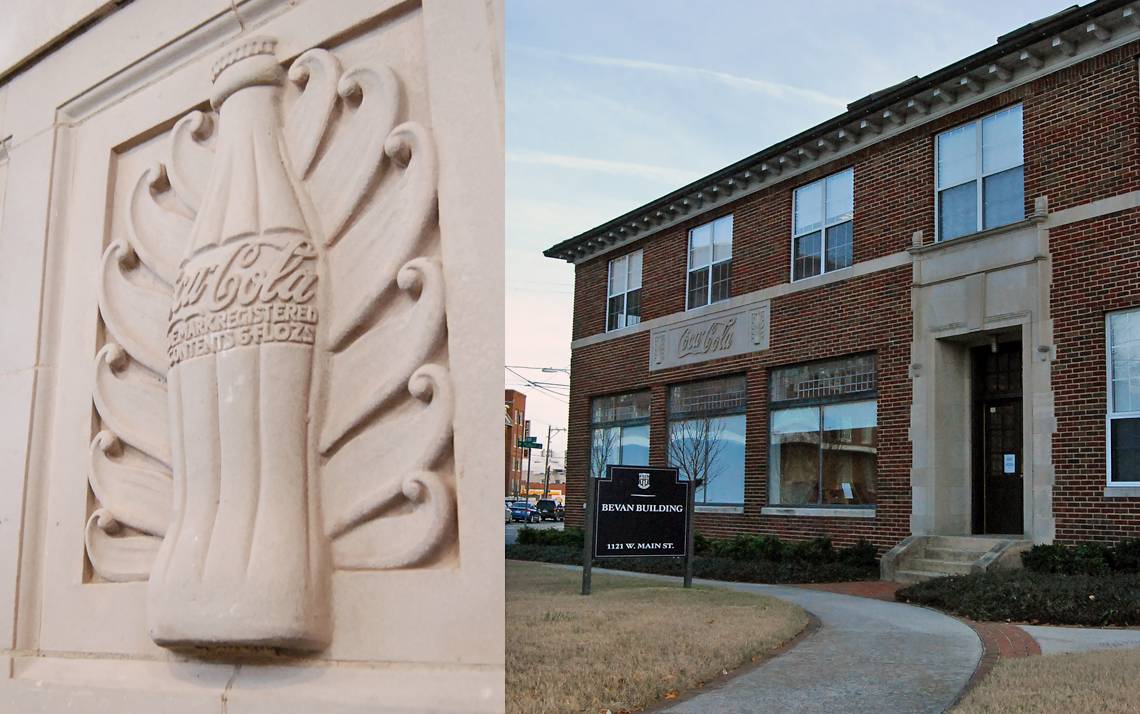Past Lives of Duke Workplaces
On a campus where change is constant, many offices come with interesting histories

At first glance, offices in Trent Hall don’t look unusual. The only thing that stands out out are the closets on opposite walls.
It’s the row of full showers in the bathrooms that alert visitors to the building’s past life as a dormitory.
Duke’s 38,000 employees are scattered across campus and Durham. Many work in facilities with pasts that differ greatly from their present.
As part of Duke’s growth, it has renovated existing buildings fit new purposes. Tobacco was once stored in Smith Warehouse while Erwin Mill once produced textiles. Now they’re home to Duke offices.
“They’re just cool buildings,” Duke Executive Vice President Tallman Trask said.
Meanwhile, buildings on campus have seen their uses change. East Campus’ Bishop’s House was the president’s residence, a faculty club, and an infirmary before housing Duke Continuing Studies. Before they were offices, the houses that line Campus Drive were once the homes of Duke leaders.
But some campus buildings hold less obvious histories. Here are a few of their stories.
Trent Hall

When Rae Jean Proeschold-Bell, associate professor at the Duke Global Health Institute, was setting up her office on the third floor of Trent Hall, she stuck her desk on the left side of the room.
As a Duke freshman in 1990, when she shared a room a few doors down, that was her side.
“It didn’t feel right to be on the other side,” she said.
Opened in 1950, Trent Hall housed, at times, freshmen, grad students and even members of the men’s basketball team.
But stuck among the hospital sprawl, far from East and West Campuses, it was never a popular address for students. So, in the late 1990s, it became office space.
While renovations have stripped it of much of its dorm feel, the bathrooms, closets, and the occasional freshman year photos that Proeschold-Bell brings around, are the few nods to Trent Hall’s past.
“They usually laugh,” Proeschold-Bell said of colleagues’ reaction to the photos. “The big hair we had back then was pretty funny.”
Bevan Building

In Duke’s Office of Special Events and University Ceremonies, on the second floor of the Bevan Building, is a spacious room with a conference table in the middle and a printer near the wall. Set in the wall behind the printer is a roughly two-foot tall relief of a Coca-Cola bottle.
It’s one of many signs of the building’s former purpose.
Built around 1930 as a Coca-Cola bottling plant, the brand’s familiar script logo is still etched into the brick building’s façade which faces Main St.
After the Coca-Cola bottling operation moved elsewhere in the 1960s, the building became home to Durham’s branch of Goodwill Industries and, later, Duke’s Talent Identification Program. Duke bought the building around the turn of the century and, in 2003, named it in honor of former provost William Bevan.
In addition to the Office of Special Events and University Ceremonies, it’s home to the Office of the University Registrar and employees from Duke’s Student Information Services and Systems.
And fittingly, just off the lobby, there’s a Coca-Cola vending machine.
Bivins Building

Like the rest of the staff of Duke’s Dance Program, Christina Price has been packing up her office in East Campus’ Bivins Building.
“It’s tough, you’ve got your personal pictures, thank you cards from students, I’m having to go through a lot of stuff,” said Price, the program’s business manager.
In the two decades she’s worked in Bivins, she’s seen it undergo plenty of change. She remembers when there was an art gallery on the first floor and when Duke’s International Comparative Studies Program had the space now belonging to the Thompson Writing Program.
For Bivins, one of Duke’s oldest buildings, this kind of flux has never stopped.
The two-story building was erected in 1905 as a dormitory for Trinity Park School, a prep school for future students of Trinity College, the forerunner to Duke.
After Trinity Park School closed in 1922, it became a Trinity College dorm and, later, home to Duke’s Botany and Zoology departments. In the 1930s, the Department of Civil Engineering moved in and Bivins became the site of Duke’s annual Engineers Shows, which dazzled crowds from Duke and beyond with displays of the latest technological marvels.
As more departments migrated to West Campus, Bivins settled into its role as an East Campus arts outpost, home to the Dance Program and the campus radio station. But when the Rubenstein Arts Center opens in early 2018, it will give both of those tenants – and Price – and new home, adding another new chapter to Bivins’ story.